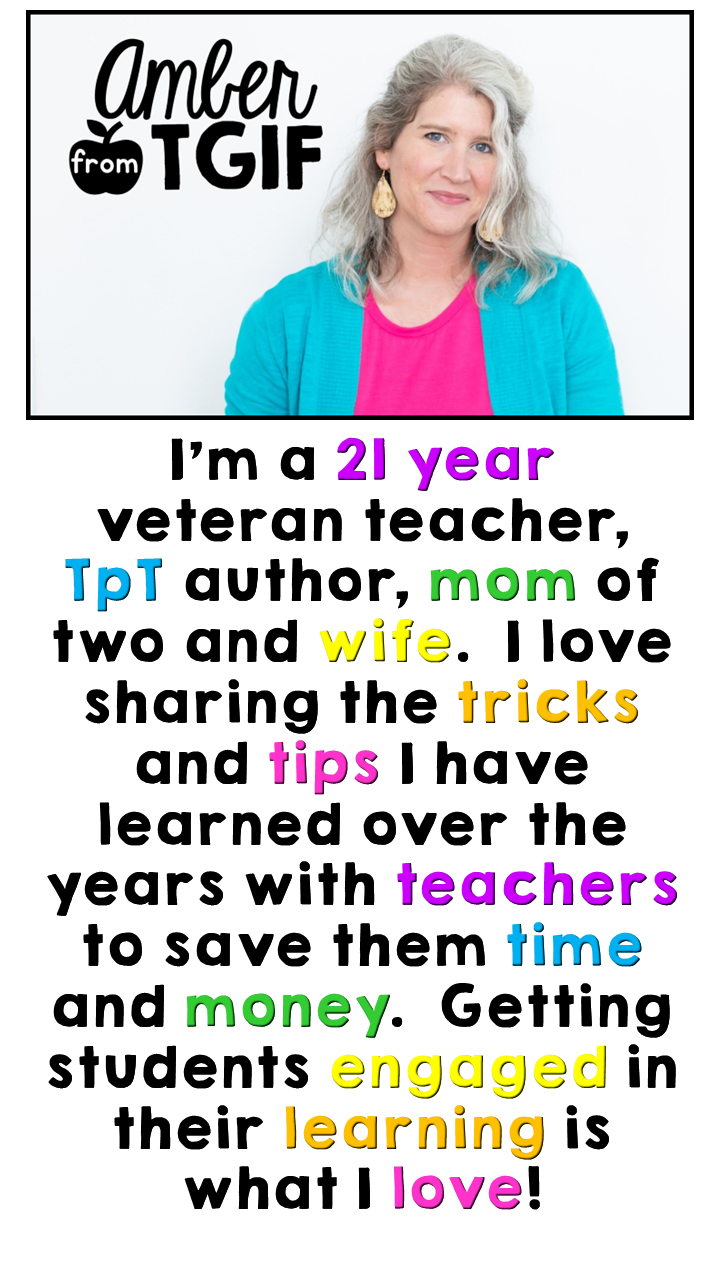WELCOME TO THE BLOG
Proven Strategies to Master Challenging Educational Concepts in Your Upper Elementary Classroom
- Slow down the pace. (make a one day lesson two days)
- Find time for quick reviews over the next several days. (I would use 5 minutes at the beginning of a new math lesson to review.)
- Make the lesson as hands-on as possible. (use tens blocks, two sided chips, dried beans, or even a dry erase board)
- Break it into smaller chunks. (In the case of distributive property, I started with drawing pictures of arrays and we broke them apart. At this point, I didn't worry about writing out the equation using distributive property as I wanted them to understand the concept first.)
- Make an anchor chart together for students to refer to later.
- If it is something with several steps, make a dry erase template for them to practice again and again.

Starting with concrete, hands-on experiences is a great way to help students building their understanding before moving into abstract learning. Few things are as challenging to teach as inferences. When it comes to teaching this abstract concept, Chrissy from Buzzing with Ms. B always starts with a hands-on, engaging activity to help students build their understanding from the concrete to abstract! She provides students with cards with different pictures on them, all related to one idea. Students discuss what they see on the pictures and try to infer what the topic is. From there, she guides them through a short text to help them apply their understanding of inferences to the text, pausing to ask guiding questions and thinking aloud to show students how the thought process works. It also helps to provide students short, focused practice on the specific skill that they're learning, so they can build their understanding without feeling overwhelmed! Task cards like these are a great way to do this, as well as a good check for understanding to see who needs additional help! Read more about how to teach inferences here or grab the complete unit here! You can also find all of the Reading Strategy Minipacks here, so you can teach abstract concepts in a hands-on, guided way!
Survival Teaching Strategies You Need In December
By Amber Dial, Ronnie Eyre, Carla Fedler, Marissa Despins, Tiffany Schmidt, Vanessa Mejia, Tammy DeShaw
- Students love math crafts and enjoy working on the math and then coloring.
- Students are invested in giving their best math work since it will go on display.
- Students show their work with the models and strategies included on the crafts.
- Teachers love the no prep crafts. Just copy and go!
- Teachers appreciate the printable picture directions - perfect for sub days.
- Teachers like students practicing math standards in a meaningful way.
- Admin loves seeing that math standards are being met.
- Everyone loves how the math crafts decorate the hallway or classroom.
Sharing our Blessings with Teachers: A Thank You Giveaway

Even though that "milestone birthday" has slowed my body a bit, I am so incredibly thankful to be reaching it. As my children are in the young adult and teenager phase, they have needed me less and less, but it has allowed me time with my aging parents. My husband retired this year after 31 years of factory labor, and it allowed my family and I TIME to take an extended camping trip out to the Black Hills National Forest and Yellowstone National Park.
Sharing the Blessings with Teachers FREEBIE
I am so incredibly blessed, and I want to share some blessings with teachers. TIME is something we cannot make more of and so today I am sharing the gift of time by sharing this craft for free to save you so time in the classroom since it is print and go! Getting home to relax in the evening and enjoy life is a blessing all teachers deserve.
While in the classroom, I so enjoyed creating math crafts with my students. Not only do my students get critical math review, they have so much fun coloring the crafts and making them uniquely their own. The bonus I get as teacher is that the math crafts not only showcase the standards that we are mastering, but they also decorate our classroom or hallway.
GRAB THIS MATH CRAFT FOR FREE!
Sharing the Blessings with Teachers GIFT CARD
MORE FREEBIES and GIFT CARD GIVEAWAYS
I have 15 other friends who are ALSO giving away free resources and $25 TpT gift cards. Visit each one below by clicking on their logos! You can enter ALL of the giveaways and pick up loads of freebies!
You are invited to the Inlinkz link party!
Click here to enter













































